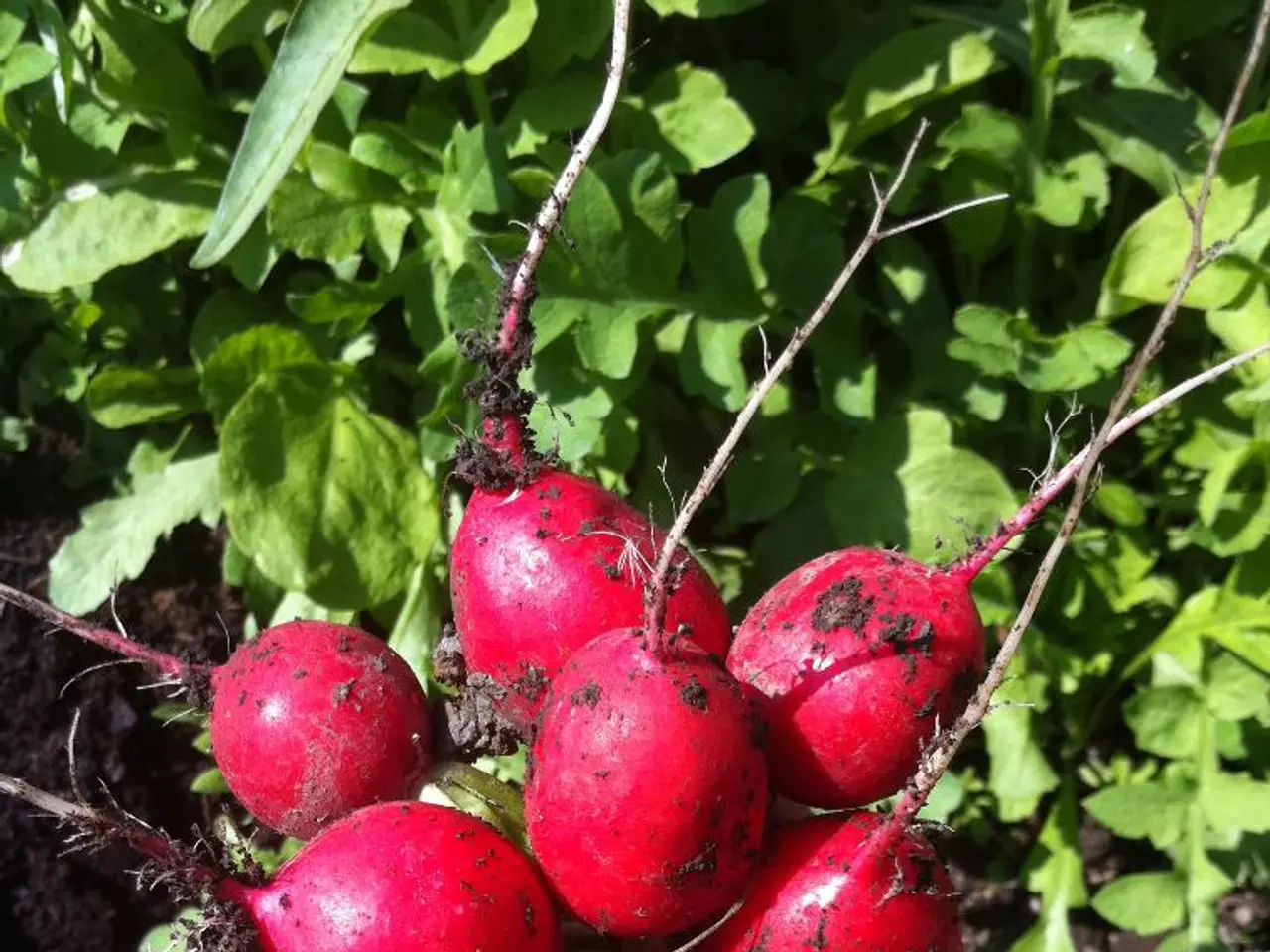Preserved Root Vegetables Through Fermentation: Beet Preparation Techniques Explored
Fermenting beets at home has become increasingly popular due to their health benefits and unique flavour profile. Here's a simple recipe for fermented beets with a warm ginger kick, bright citrus notes, and the aromatic bite of coriander.
**Ingredients:**
- Fresh beets (about 2 pounds), washed and peeled - Fresh ginger (1-2 inches), peeled and thinly sliced or grated - Whole coriander seeds (1 tablespoon) - Citrus peel (from 1 lemon or orange, carefully peeled avoiding bitter white pith) - Non-iodized salt (such as sea salt or kosher salt) - Filtered water (non-chlorinated)
**Steps:**
1. Prepare the beets: Slice peeled beets into thin rounds or small cubes for faster fermentation. 2. Make the brine: Dissolve about 1-2 tablespoons of salt in 4 cups of filtered water. This creates a roughly 3% brine, ideal for lacto-fermentation. 3. Combine veggies and spices: In a clean fermentation jar or crock, place a layer of beet slices, then add a few slices of fresh ginger, a sprinkle of coriander seeds, and a strip or two of citrus peel. Repeat layers until jar is full, leaving some headspace. 4. Add brine: Pour the salt water brine over the beets and spices until everything is submerged. Use a fermentation weight or a clean small glass to keep beets submerged under the brine to avoid mold. 5. Cover: Use an airlock lid or a clean cloth secured with a rubber band to allow gas to escape but keep out contaminants. 6. Ferment: Leave at room temperature (65-75°F or 18-24°C) for about 5-10 days, tasting periodically until it reaches desired tanginess. Fermentation can be longer or shorter depending on temperature and taste preference. 7. Refrigerate: Once fermentation is done, replace the cloth with a regular lid and store in the fridge to slow fermentation.
This method produces lacto-fermented beets flavored with the warmth of ginger, the citrus brightness, and the aromatic bite of coriander. Adjust quantities of spices to taste. Using fresh lemon or orange peel adds a nice aromatic citrus note without overpowering the beets.
For a shortcut, you can follow the steps from pickled beet recipes with pickling spices that include coriander and ginger and add fresh citrus peel to the brine.
Mind the temperature during fermentation, as vegetables ferment faster in a hot kitchen and more slowly in a cool one. Discard ferments that smell or taste putrid or have mold at the surface of the brine. The brine from fermented beets can be consumed, but it may taste salty and sour.
Other fermented food recipes to consider include Beet Kvass, Kimchi, Fruit Kvass, and Homemade Sauerkraut Recipe. Fermented beets are easy to make, with most of the hard work done by beneficial microorganisms that convert sugars into lactic acid.
Store the beets in the fridge for up to 6 months. The brine may thicken over time due to the high starch content of beets. The fermentation process is complete when the beets taste pleasantly sour. The fermentation time can vary based on personal preference, temperature, and batch size.
The fermented beets can be used as traditional pickled beets and served on top of a salad, alongside roasted vegetables, or with grilled chicken. Keep the beets submerged in brine to prevent mold and other microbes from forming. No starter culture is required for successful fermentation, but it can speed up the process or help culture-specific bacteria.
Use filtered water to avoid inhibiting fermentation. The juice of fermented beets may become viscous and thick. A viscous brine is common due to the high starch content of beets, but if it's slimy or putrid-smelling, discard the ferment.
You can adjust the recipe with various herbs or spices to suit your preferences, such as dill and garlic, juniper berry and lemon zest, cardamom, star anise, allspice, marjoram, and thyme. A cloudy brine is a normal process of fermentation. Use a mandoline to slice the beets uniformly for even fermentation.
Test the PH of your brine before eating if you're concerned about food safety. The PH of properly fermented food should be 4.6 or lower. Fermented beets are a popular Eastern European fermented vegetable. Scrub the beets clean and peel them before slicing. Use any beet variety, such as golden beets, red beets, or Chioggia beets. Salt is necessary for fermented beets as it helps keep them crisp, flavors them, and promotes ideal conditions for fermentation.
- Fermentation science plays a significant role in the health-and-wellness and lifestyle sectors, with fermented foods like lacto-fermented beets offering numerous health benefits.
- In the realm of food-and-drink and healthy-cooking, fermenting beets at home can be an exciting endeavor, providing unique flavors and aromatic combinations, such as ginger, coriander, and citrus.
- Beyond beets, exploring other fermented food recipes, such as Beet Kvass, Kimchi, Fruit Kvass, and Homemade Sauerkraut Recipe, can further expand one's understanding of and enthusiasm for science and the art of fermentation.
- As people become more conscious of their diet and fitness-and-exercise routines, fermented beets can contribute positively to their health and well-being by providing probiotics and enhancing nutrient absorption.




